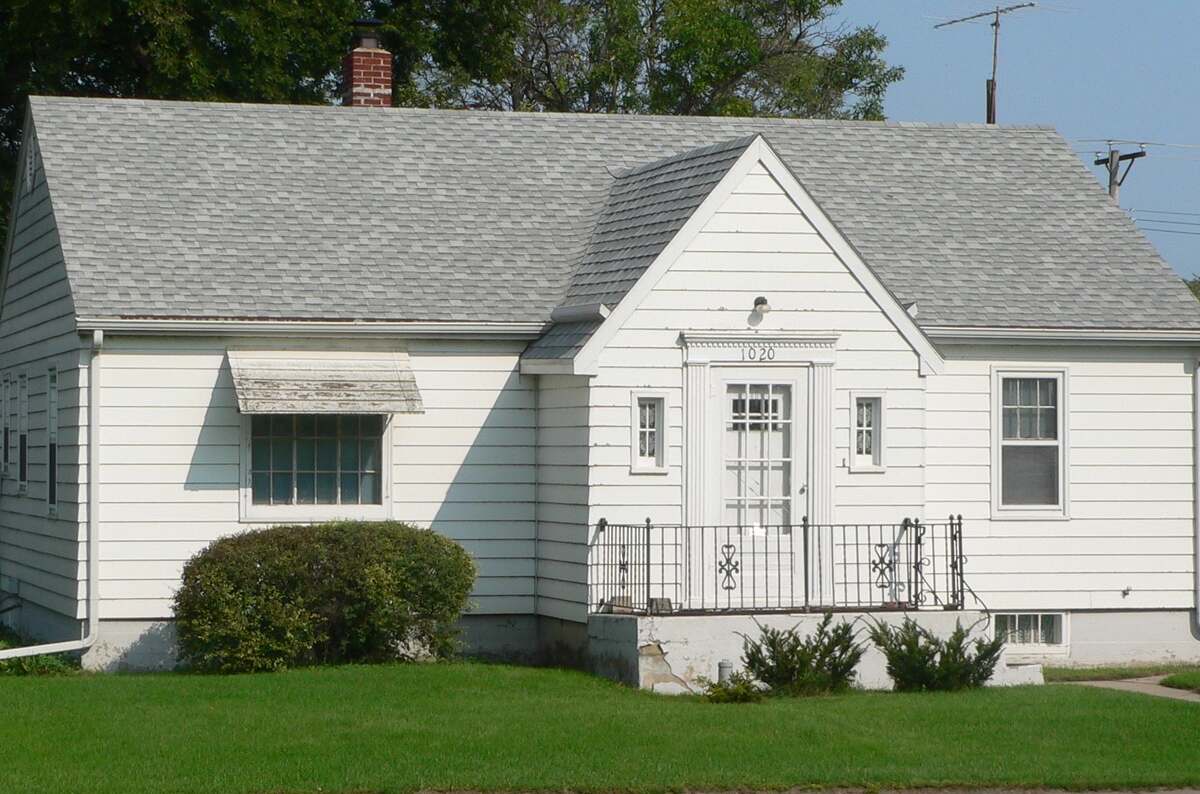
From the lush West River region to the rolling prairies of the East River, South Dakota is a hidden gem. But one thing that ties it all together is the quest for the perfect lawn. The secret to achieving that green paradise? Finding the best grass seed for South Dakota.
With cold winters and somewhat humid summers, growing nice grass is not always easy. But fear not! In this article, we’ll guide you through the top grass types that will keep your yard looking lush and vibrant, no matter which side of the Missouri River you call home.
If you’re short on time, read our overview of how to choose the best grass for South Dakota at the end.
Cool-Season Grasses
Kentucky Bluegrass

Photo Credit: Matt Lavin / Flickr / CC BY-SA 2.0
Kentucky bluegrass is the most widely used turfgrass in South Dakota and for good reason. This hardy grass is well adapted to cooler climates, making it a perfect fit for the cold, dry winters in the state. Not only that, but this grass is also known for its ability to spread quickly, making it an excellent choice for repairing damaged areas in your lawn.
While Kentucky bluegrass performs best in full sunlight, it can also be mixed with fine fescues for shady areas. Therefore, when choosing a seed mix for a sun-shade lawn, be sure to look for one with a good balance of Kentucky bluegrass and fine fescues to ensure optimal results.
Classification: Cool-season grass
Spreads by: Rhizomes
Shade tolerance: Low
Drought tolerance: Moderate
Foot traffic tolerance: Moderate
Maintenance needs: Moderate mowing frequency and high fertilization needs.
Mowing height: Set mowing height between 2.5 and 3.5 inches.
Potential for disease: Moderate to high; prone to several diseases, such as dollar spot, leaf spot, necrotic ring spot, summer patch, and stripe smut.
Soil pH: 6-7.5
Soil type: Performs best in well-drained, heavy soils with high fertility.
Other notes: Kentucky bluegrass is often mixed with perennial ryegrass for its quick germination and establishment.
Grass Seed Options:
– Jonathan Green (11970) Blue Panther Kentucky Bluegrass Grass Seed (3 lbs.)
– SeedRanch Midnight Kentucky Bluegrass Seed (5 lbs.)
Fine Fescues
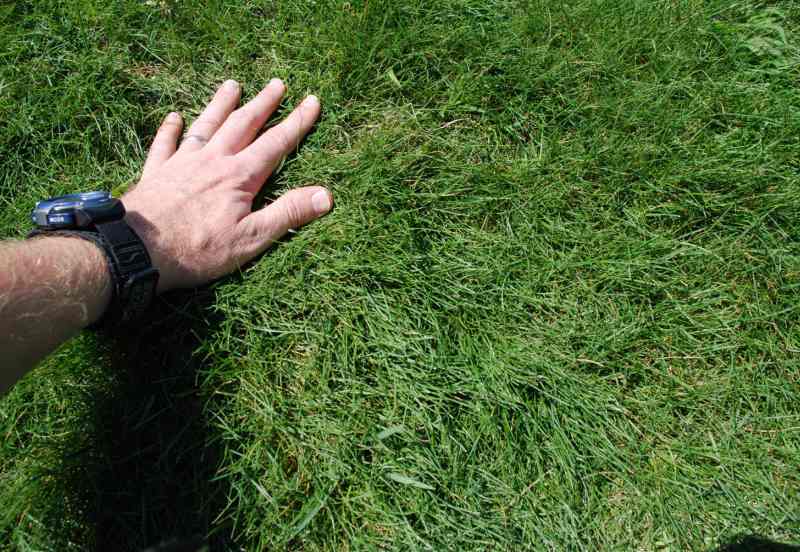
Aaron J. Patton, Ph.D. / Turfgrass Extension Specialist at Purdue University
Fine fescues are another great grass option for South Dakota lawns. These grasses have fine leaves and are well known for tolerating shade, drought conditions, low fertility, and unfavorable pH levels. Because of this, they are often used in seed mixtures with other grasses to create a hardy, adaptable lawn that can withstand various environmental conditions.
While fine fescues are not usually seeded alone, they are commonly used for overseeding Kentucky bluegrass lawns. This is because they complement Kentucky bluegrass well, providing shade tolerance and drought resistance where the bluegrass may struggle.
Classification: Cool-season grass
Spreads by: Creeping red fescue spreads by rhizomes, while other fine fescues are bunch-type grasses, such as Chewings, hard, and sheep fescues.
Shade tolerance: Moderate to High, depending on species
Drought tolerance: Moderate to High, depending on species
Foot traffic tolerance: Low to Moderate, depending on species
Maintenance needs: Low fertilizer and mowing needs
Mowing height: Set mowing height between 2.5 and 4 inches, depending on species.
Potential for disease: Moderate. Common diseases include red thread, leaf spot, dollar spot, summer patch, and powdery mildew.
Soil pH: 6-6.5
Soil type: Will not perform well in wet soil conditions. Prefers drier soils and tolerates a wide range of soil types and fertility.
Other notes: The most drought-resistant fine fescues are hard fescues, and the most shade-tolerant is Chewings fescue.
Grass Seed Options:
– Outsidepride Legacy Fine Fescue Grass Seed (5 lbs.)
– Eretz Creeping Red Fine Fescue Seed (choose your size)
– Outsidepride Creeping Red Fine Fescue Grass Seed (25 lbs.)
– Outsidepride Hard Fine Fescue Grass Seed (10 lbs.)
Tall Fescue

Aaron J. Patton, Ph.D. / Turfgrass Extension Specialist at Purdue University
Tall fescue is a popular grass option in South Dakota due to its impressive cold, heat, and drought tolerance. This makes it an excellent choice for homeowners who want a hardy lawn that can withstand various weather and soil conditions.
In addition to its hardiness, tall fescue grass is less susceptible to pests than Kentucky bluegrass. It grows and establishes quickly, which means you can have a lush, green lawn in a short time. However, one downside to the fast growth is that it requires more frequent mowing than other grass types.
Classification: Cool-season grass
Spreads by: Produces short rhizomes but has a bunch-type growth habit
Shade tolerance: Moderate
Drought tolerance: Moderate to High
Foot traffic tolerance: Moderate
Maintenance needs: Frequent mowing. Does not produce significant thatch.
Mowing height: Set mowing height to 2 inches when grass reaches 3 inches tall.
Potential for disease: Tolerant of most diseases when properly maintained.
Soil pH: 5.5-6.5
Soil type: Adapted to a wide range of soil conditions, but prefers fertile clay soils with good drainage.
Other notes: Although some sources recommend pairing tall fescue with Bermudagrass, they are incompatible, and seed mixes with other cool-season grass types are preferable.
Grass Seed Options:
– Triple-Play Tall Fescue Grass Seed Blend (5000 sq ft)
– Eretz Kentucky 31 K31 Tall Fescue Grass Seed (choose your size)
– Pennington The Rebels Tall Fescue Grass Seed Mix (7 lb.)
Perennial Ryegrass
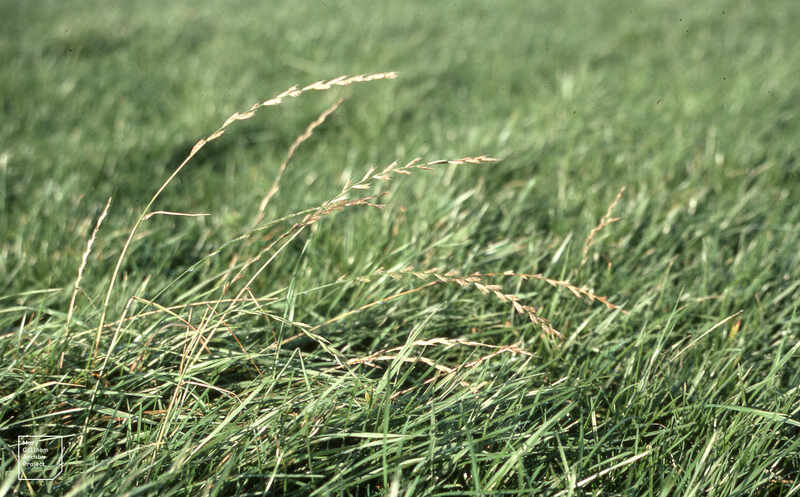
Photo Credit: Dr Mary Gillham Archive Project / Flickr / CC BY 2.0
Perennial ryegrass is a grass type often included in seed mixes for South Dakota lawns because of its rapid growth and ability to repair thinning areas and bare spots. It can also help protect other grasses while they grow by acting as a cover from the sun.
In addition to its growth capabilities, perennial ryegrass is also a moderate-maintenance grass and moderately disease-resistant, with high wear tolerance. It’s important to note that there is also an annual ryegrass variety, which dies in the first winter. While annual ryegrass can be a good option for temporary cover or rapid growth, it is not sustainable for a long-term lawn solution.
Classification: Cool-season grass
Spreads by: Has a bunch-type growth habit
Shade tolerance: Low
Drought tolerance: Low
Foot traffic tolerance: High
Maintenance needs: Moderate mowing and fertilization requirements. Thatch is not significant.
Mowing height: Set mowing height to 1.5 to 2.5 inches
Potential for disease: Moderate. Common diseases include gray leaf spot, red thread, and leaf spot/melting-out.
Soil pH: Can grow in soils with a pH between 5 and 8, but prefers between 6 and 7.
Soil type: Prefers good drainage and fertility, but can tolerate some poor drainage.
Other notes: Often seeded along with Kentucky bluegrass. Requires sharp mower blades due to its fibrous leaves.
Grass Seed Options:
– Outsidepride Perennial Ryegrass Seed (5 lbs.)
– Eretz ProTurf Perennial Ryegrass Fine Lawn Seed (choose your size)
Warm-Season Grasses
Buffalograss
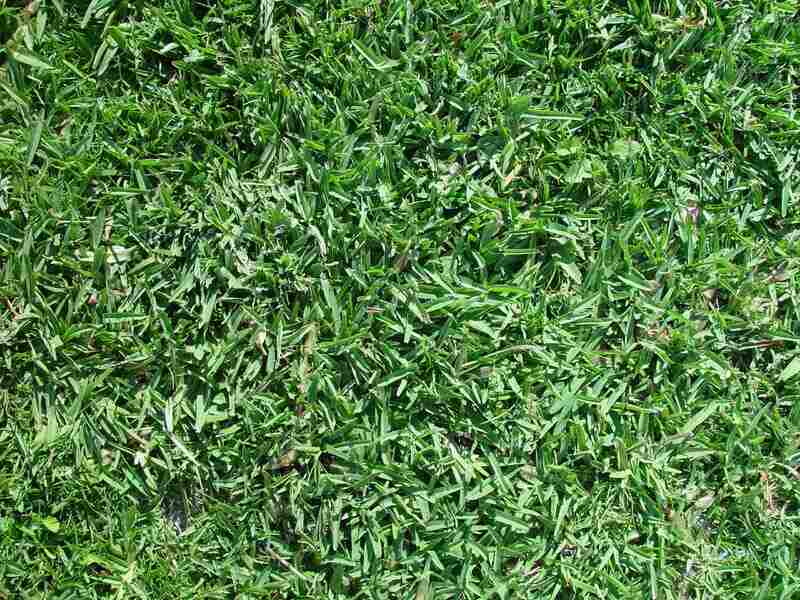
Photo Credit: Pixnio
While it is a warm-season grass, buffalograss has the most cold tolerance of all the warm-season types, making it an excellent choice for the cooler temperatures experienced in the state.
In addition to its cold tolerance, buffalograss is also known for its good heat and drought tolerance. It is a hardy option for South Dakota lawns that experience hot and dry summers. Another benefit of buffalograss is that it is very low-maintenance, requiring less mowing and fertilization than other grass types.
Classification: Warm-season grass
Spreads by: Stolons
Shade tolerance: Low
Drought tolerance: High
Foot traffic tolerance: Low
Maintenance needs: Low fertilizer and mowing needs. Requires weed control.
Mowing height: Set the mowing height between 2 and 3 inches.
Potential for disease: Good tolerance against diseases and insects
Soil pH: 6.5-7.5
Soil type: Native clay soils, not sandy soils
Other notes: Since buffalograss is a warm-season grass, in South Dakota it will have a short growing season and a long period of dormancy.
Grass Seed Options:
– Everwilde Farms Buffalograss Seeds (1 lb. of seeds)
– Buffalograss seed (primed) (5-lb. bag)
Blue Grama
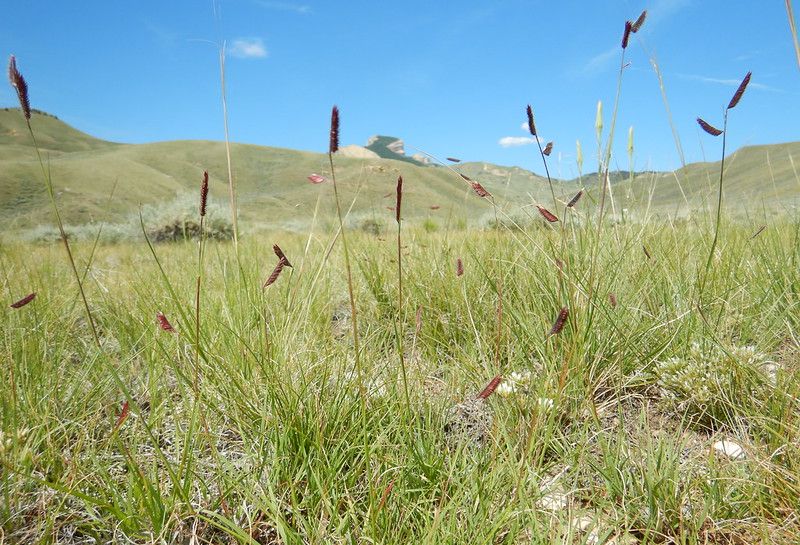
Photo credit: Matt Lavin / Flickr / CC BY-SA 2.0
Blue grama is another warm-season native grass that can thrive in South Dakota lawns. While it may look brown for half the year, blue grama is known for its hardiness and ability to withstand a range of weather conditions. It is cold and heat tolerant.
One of the benefits of blue grama is its low maintenance needs. Blue grama can thrive with less water and attention than other grass types, like Kentucky bluegrass. This makes it a great choice for homeowners who want a beautiful lawn without all the upkeep.
Classification: Warm-season
Spreads by: Rhizomes
Shade Tolerance: Low
Drought Tolerance: High
Foot Traffic Tolerance: Low
Maintenance Needs: Low maintenance requirements
Mowing Height: Set mowing height between 2 and 3 inches
Potential for Disease: Low to Moderate. Its most prevalent disease is fungal rust.
Soil pH: 6.6-8.4
Soil Type: Tolerates a wide-range of soil textures, including clays and sandy or gravelly loams. Does not perform well in wet, poorly drained soils.
Other notes: Blue grama has horizontal seed heads that might not look visually striking to some homeowners.
Grass Seed Options:
– Everwilde Farms Blue Grama Grass Seeds (1 lb.)
– Nature’s Seed Blue Grama Grass Seeds (1 lb.)
Best Grass for Sioux Falls
Sioux Falls, South Dakota, is known for its hot, humid summers and cold, dry winters, which can be challenging for any lawn. However, with the right type of grass, it’s possible to have a lush, healthy lawn year-round.
The most common grass species in Sioux Falls is Kentucky bluegrass, often combined with fine fescues or perennial ryegrass. These grasses are well adapted to the temperature and moisture changes that occur in the region, making them a popular choice for homeowners in the area.
Tall fescue is another option for Sioux Falls lawns, as it has impressive tolerance to hot and cold temperatures. However, because of its fast growth, it may require more frequent mowing than other grass types.
How to Choose the Best Grass for South Dakota
Maintenance Needs
If you’re aiming for a lush lawn, remember to factor in the time and effort required for its upkeep. Unless you want to spend every weekend sweating over your yard, opt for low-maintenance grasses that won’t demand all your precious downtime.
High-maintenance grasses: Kentucky bluegrass
Moderate maintenance grasses: Perennial ryegrass, tall fescue
Low-maintenance grasses: Buffalograss, blue grama, fine fescues
Shade Tolerance
Not all grass types are created equal when it comes to shade tolerance. So don’t let your green space become a victim of shady business! Instead, take the time to assess your yard’s shade level and choose a grass seed that can handle it like a pro.
High shade tolerance: Fine fescues (especially Chewings fescue)
Moderate shade tolerance: Tall fescue
Low shade tolerance: Kentucky bluegrass, perennial ryegrass, buffalograss, blue grama
Traffic Tolerance
For families with active kids and pets, choosing a durable grass seed that can handle heavy foot traffic is important. However, suppose you’re planning on growing grass just for ornamental purposes. In that case, you don’t need to worry about getting a type with high foot-traffic tolerance.
High wear tolerance: Perennial ryegrass
Moderate wear tolerance: Kentucky bluegrass, tall fescue
Low wear tolerance: Buffalograss, blue grama, fine fescues
Call the Pros
When choosing the perfect grass type for your South Dakota lawn, it can be easy to feel overwhelmed. Instead of navigating the world of grass types on your own, why not enlist the help of a LawnStarter lawn care pro? These experts can help you assess your lawn’s unique needs and recommend the perfect grass.
LawnStarter participates in the Amazon Services LLC Associates Program, an affiliate advertising program. LawnStarter may earn revenue from products promoted in this article.
Main Image Credit: Ammodramus / Wikimedia Commons / CC0 1.0